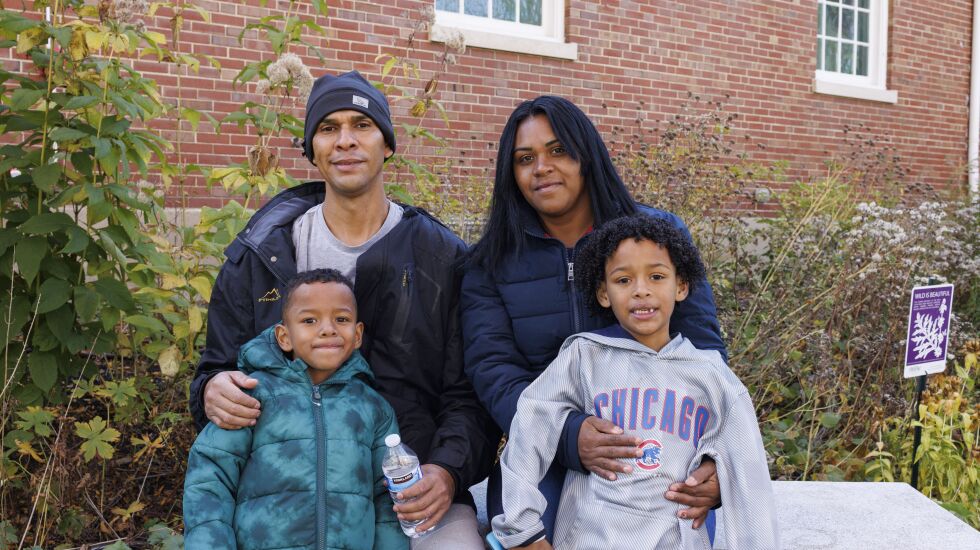
After two months of ballooning bus arrivals in Chicago that stretched the resources of the city and volunteers, the number of buses coming into the city has slowed, and the number of migrants at police stations is at its lowest point in months.
On Monday, around 2,300 migrants were awaiting shelter at police stations and airports, the fewest since late September, according to data from the city’s Office of Emergency Management and Communications. Bus arrivals are back down to a couple a day from roughly nine a day.
The slowing rate of arrivals and falling number staying at police stations comes with winter just around the corner, something advocates have feared could put the health of thousands at risk.
The 1,800 migrants still camped out at police stations, with freezing weather coming, is down 33% from just a week ago.
“It’s quieter at the station now, and I’m not complaining,” said Annie Gomberg, a longtime volunteer at the Austin district police station. “It was very frightening to have so many people and little kids sleeping outside in tents with the temperatures dropping and no end in sight.”
The rate of arrivals in the city began climbing in late May, after Title 42 — a COVID-era police used to quickly turn back migrants at the U.S.-Mexico border. In the preceding five months, only nine buses had arrived.
Chicago officials suspect that the accelerating rate at which migrants are sent to Chicago had to do with the city being awarded the 2024 Democratic National Convention and Mayor Brandon Johnson being sworn in.
Bus arrivals shot up at the end of summer. In September, 2,500 migrants and asylum-seekers arrived, up 67% from August. In October, the number of arrivals reached 3,800, including 71 buses in an eight-day span.
In the last eight days, in contrast, 16 buses have arrived.

On Oct. 19, there were more than double the number of migrants sleeping at stations as there are now, plus 660 sleeping at O’Hare International Airport, about 100 more than on Monday.
In all, nearly 25,000 migrants have arrived in the city — 21,000 by bus, over 3,300 by plane, according to city data. The vast majority of those arriving by plane are sent by Catholic Charities of San Antonio.
Those arriving by bus are mainly coming from Texas border cities. Of the 492 buses that have arrived in Chicago since August 2022, most — 152 — have come from El Paso. Another 131 came from Brownsville; 101 from Del Rio. Only 53 arrived from Eagle Pass, but almost every single one of those arrived in the last two months.
The decreasing arrival rate coincides with the city opening more shelters, including two of the biggest. The Ogden shelter opened in the West Loop in late September and now holds over 1,100 people. The shelter that opened at 2241 S. Halsted in early October now holds over 1,300 people.
Catholic Charities of Chicago, the leading provider of the state’s rental assistance program for asylum-seekers, has increased its rate of resettlement, signing leases for 640 households in October, 28% more than its goal for the month and well up from 125 in July, the first month the city shared data for.
Other municipalities have pitched in as well.

The number of migrants staying at the Austin district station fell from about 200 at the end of October to just six on Monday, after the Village of Oak Park began housing 162 migrants at a suburban hotel and a YMCA.
Still, volunteers aren’t confident the situation has changed permanently .
“Right now, we still feel very much in limbo because we do not know the long-term plan — will [the Austin station] fill up again with people tomorrow?” Gomberg asked.
A few police stations still have close to 200 people sleeping at them, according to the city, including Englewood, Chicago Lawn and Near North.
Michael Loria is a staff reporter for the Chicago Sun-Times via Report for America, a not-for-profit journalism program that aims to bolster the paper’s coverage of communities on the South Side and West Side.







